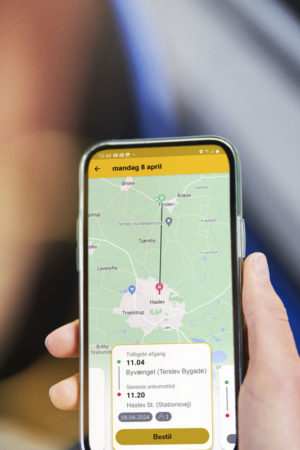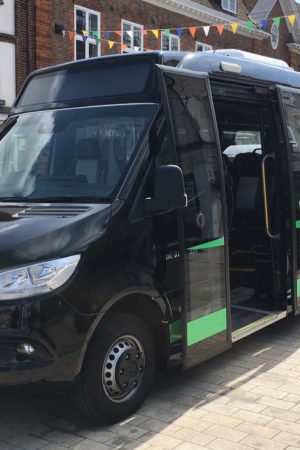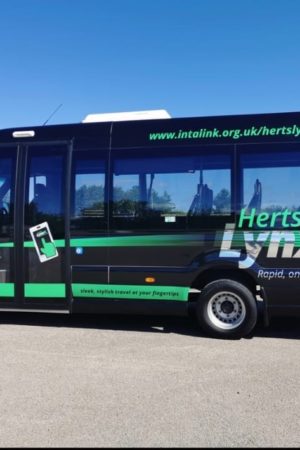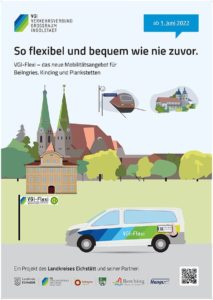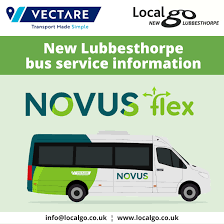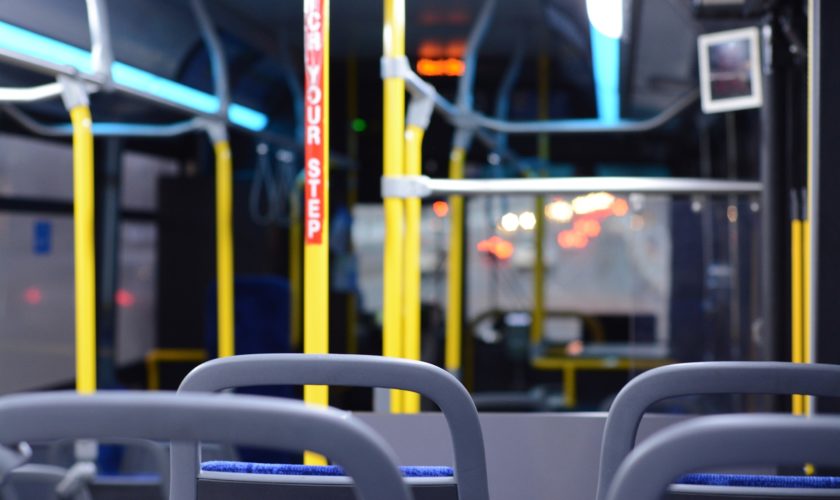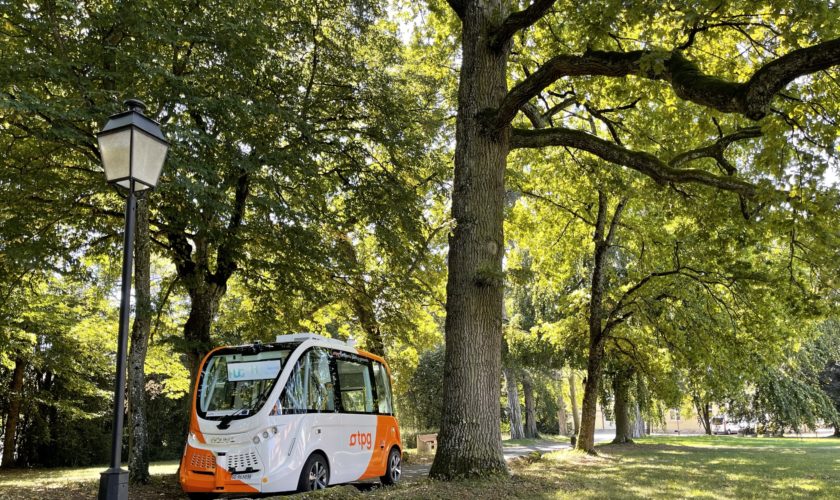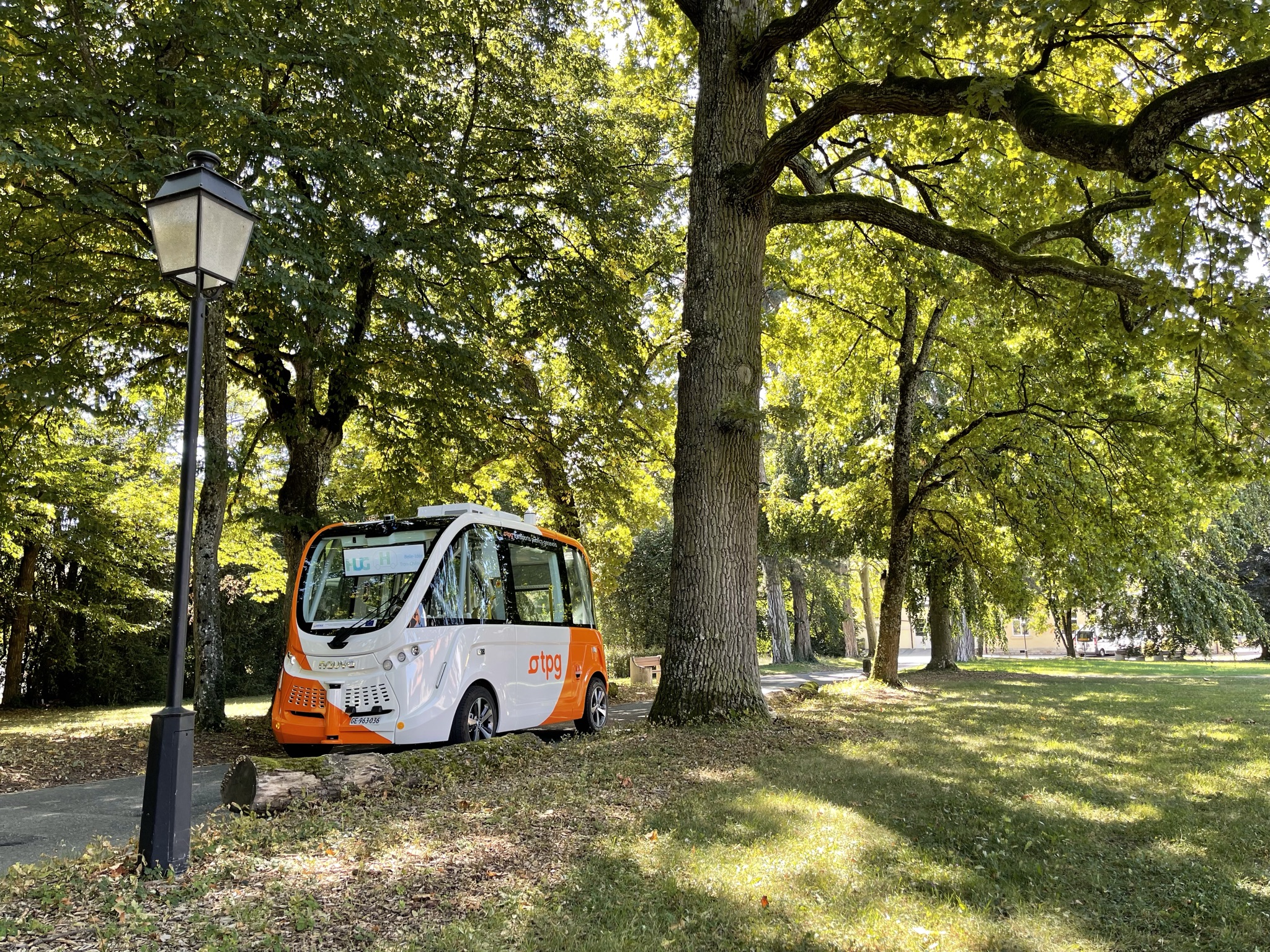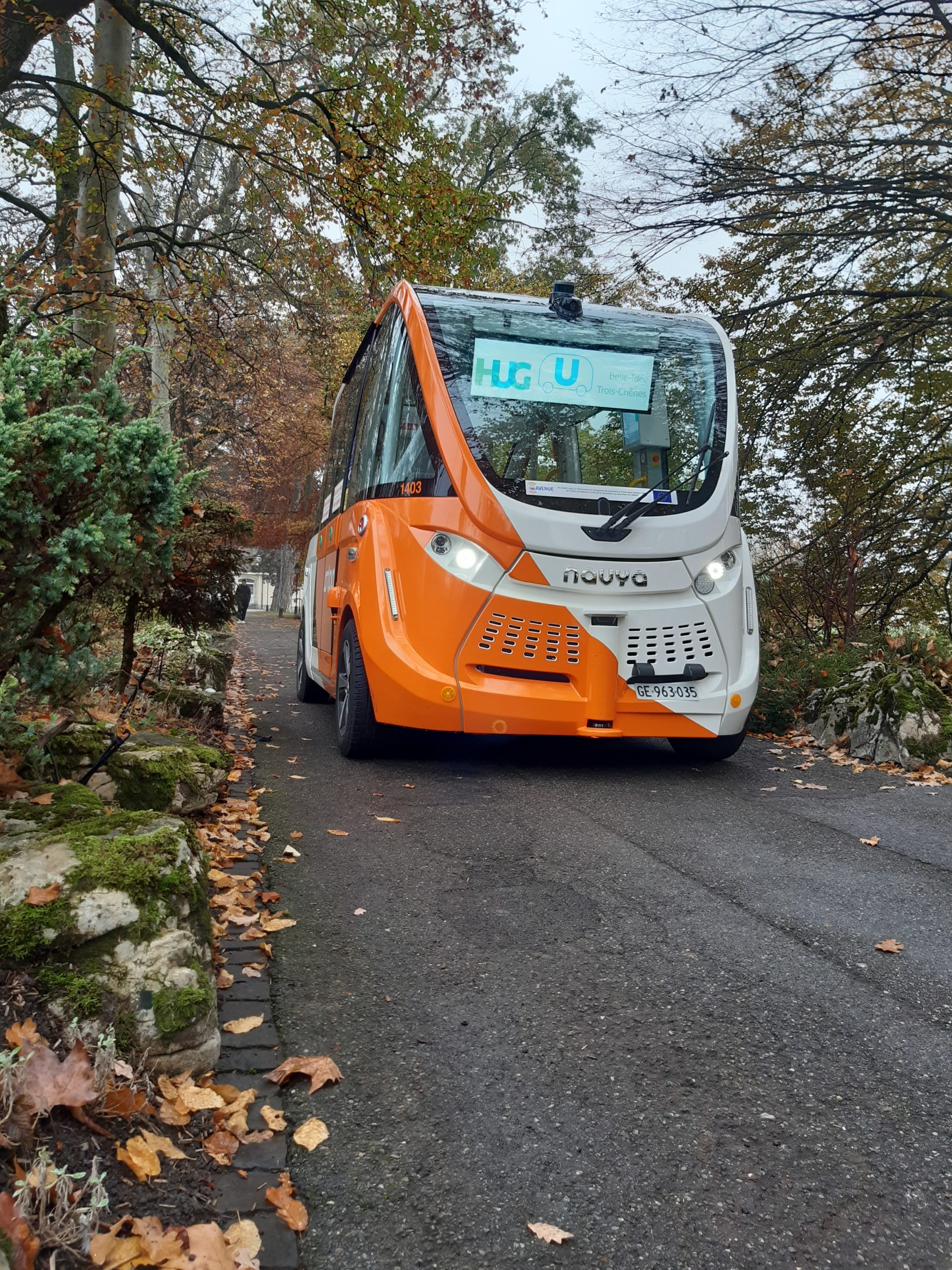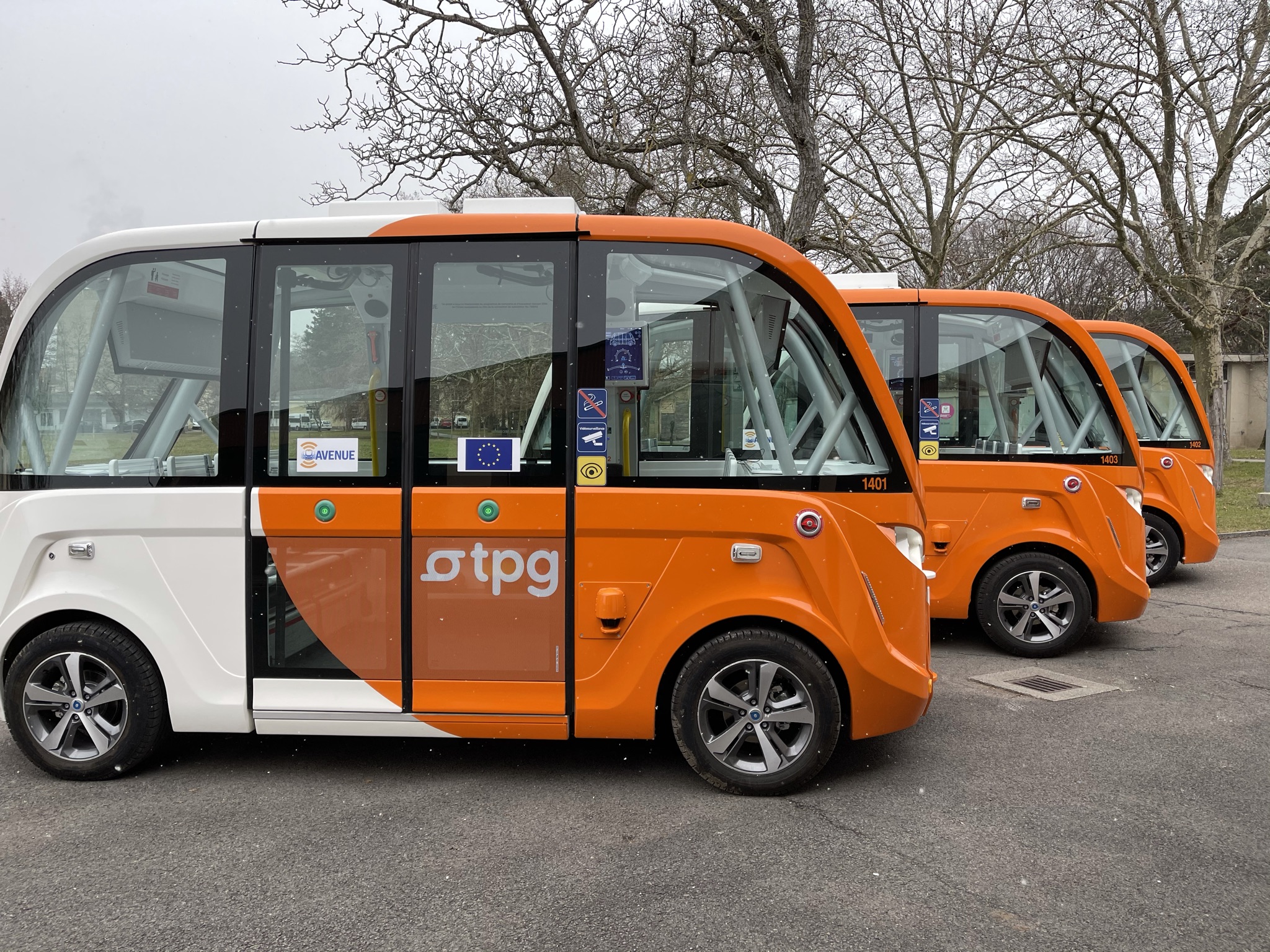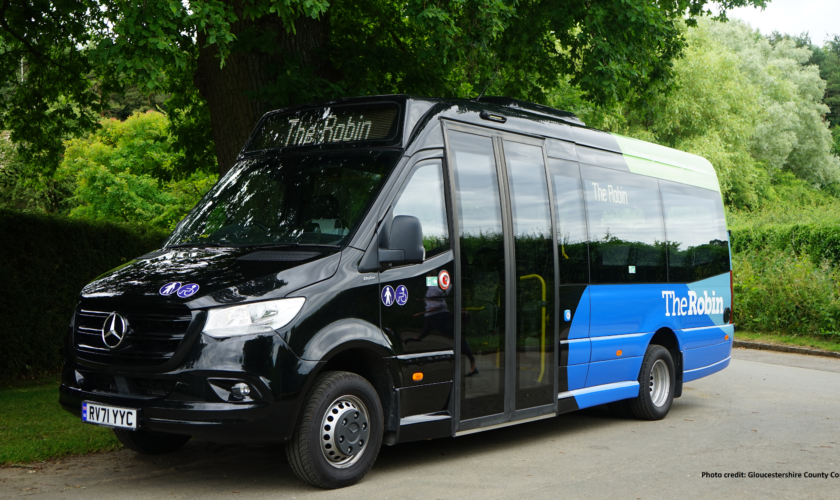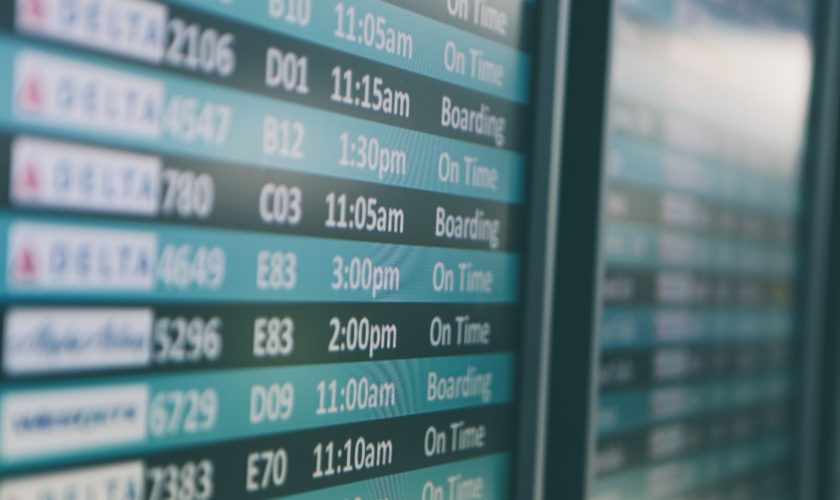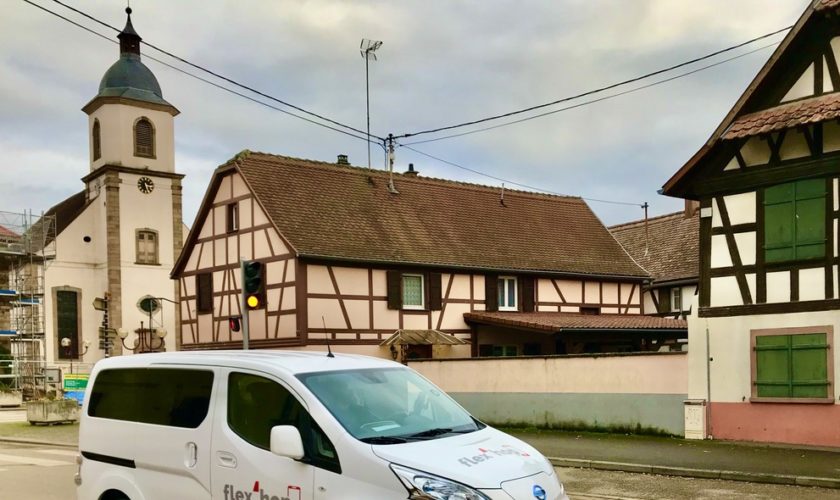Newly developed territories, service expansions, media coverage, relocation to a new HQ, new innovation areas, strong growth… A look back at an intense 2022 for Padam Mobility.
JANUARY
Orléans Métropole is extending its Résa’Tao DRT network to 4 new, redesigned zones, and a fleet of 39 vehicles.
With this project, TAO Orléans Métropole is positioning itself as one of France’s most innovative and advanced transport on-demand networks.
Pada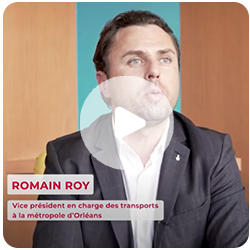 m Mobility took the opportunity to visit the site. Find here the interview of Romain Roy, Vice-President of Orléans Métropole, about the support of Padam Mobility in the implementation of the Résa’Tao network in Orléans.
m Mobility took the opportunity to visit the site. Find here the interview of Romain Roy, Vice-President of Orléans Métropole, about the support of Padam Mobility in the implementation of the Résa’Tao network in Orléans.
“We have the feeling that we are investing taxpayers’ money better, especially as Orléans Métropole’s strategy is not to save money but to offer a better service. Transport on Demand, which is an innovative solution that does not exclude anyone, not only complements the classic offer but goes further by connecting 100% of the inhabitants of Orléans Métropole to the existing transport offer… “
Romain Roy, Vice-President responsible for transport and travel at Orléans Métropole
FEBRUARY
New services in Bourges: Vitabus and Libertibus
Operated by Agglobus (RatpDev), Vitabus offers mobility to residents of communes that are not served by the network’s fixed routes. The LibertiBus service, on the other hand, meets the travel needs of people with reduced mobility residing in the 20 communes of the region (Bourges Plus, Saint-Florent-sur-Cher, Fussy and Pigny).
50 recruitments for Padam Mobility in 2022
Following its acquisition by Siemens, and to sustain i strong growth, the company is constantly recruiting various profiles. From trainees to senior staff, from the sales department to developers and HR… This year, all of the company’s value chains have been reinforced. A dozen positions are still available on the Welcome to the Jungle page of Padam Mobility.
Learn more about our values – Link to Padam Mobility’s website
Padam Mobility and Landor Links host Masterclass series
Together with Landor Links, Padam kicked off a three-part masterclass series. The aim of the series was to talk to partners and experts about current developments in the field of shared mobility. Participants, mainly transport operators and transport authorities, had the chance to voice their questions and concerns about DRT and get advice on how to integrate DRT into their BSIPs applications.
In the first Masterclass, Antonio Carmona, General Manager International and Head of UK Sales at Ticketer, and David Carnero, former Head of International Business Development and Partnerships at Padam Mobility, together with chair Matt Smallwood, Head of Digital Strategy, Transport for the North, talked about why – and how – transport operators and public transport authorities should tackle the core problem of integrated ticketing.
In the second masterclass, David spoke with Prospective Labs CEO and founder Pete Ferguson about the importance of data for DRT networks.
The third masterclass focused on the scaling potential of DTR services. On this topic, our former Head of UK Business Development Jack Holland spoke with Daniel Mould, General Director of WeDRT.
MARCH 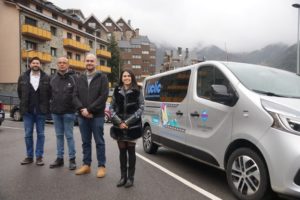
Andorra: launch of the UCLIC service in Encamp and Canilo
Uclic is a Transport on Demand service operated by Feda that offers users the opportunity to travel around the cities of Encamp and Canilo for 1 euro. The service is carried out with an 8-seater vehicle and has a total of 56 stops covering the different areas of the two municipalities.
The aim of this service is to bring the remote areas of the city closer to the centre and to facilitate sustainable mobility for all, particularly for the most disadvantaged, such as the elderly and young people. The service has been very well received: Nine months later, more than 72,000 reservations have been made, with an average rating of 4.9/5 for the service.
APRIL
Padam Mobility and Hacon start their first joint On-Demand project in Switzerland
SALÜ, an on-demand service offered by Swiss transport operator BUS Ostschweiz AG, was launched in March for the city of Wil. Users have access to a Web App, and IOS and Android apps to obtain information and book the service. Padam Mobility and Hacon were responsible for the technical implementation. SALÜ is already the fifth on-demand transport project implemented by the two Siemens subsidiaries in the DACH region within just a few months.
MAY
European rollout is accelerating with new DRT services in Spain
Two DRT services have been launched under the name TADex in the rural areas of Bajadoz (operator: Damas Extremadura), and Cáceres (operator: Solís Autocares) in Extremadura, Spain. They provide an essential travel solution for these areas, which are far from the main centre.
More about Padam Mobility’s use cases – Link to our blog
Padam Mobility is part of Siemen’s booth at the IT-Trans in Karlsruhe (Germany)
At this year’s IT-Trans trade fair in Karlsruhe, the Padam team was prominently integrated on the Siemens Mobility stand. After about a year as a firm part of the Siemens Mobility family, the software companies are increasingly growing together and showing their strength as a unit for intermodal transport systems.
JUNE
VGI-FLEXI: On-demand transport in the suburban area of Beilngries (Germany)
Since June 2022, the Greater Ingolstadt area has a new Demand Responsive Transport service called VGI-Flexi. The district of Eichstätt is the first VGI member association to introduce a digital Transport on Demand service, enabling the residents of Beilngries, Kinding and Plankstetten to benefit from a flexible mobility service. The service area comprises about 70 stops.
In October, the service was extended to a new area, around Scheyern. Four more areas will follow in 2023. Stay tuned!
Set-up of a Paratransit, peri-urban and rural DRT network in Aveyron with Agglobus, and in Rubanbleu for rural services.
Operated by SATAR, these complementary services now cover a significant part of the areas not covered by traditional networks. Thus, rural and suburban residents and those with reduced mobility can contact a call centre to request a ride. In total, fifteen vehicles have been chartered to improve the territorial coverage of public transport in the area.
Download our case study about DRT in rural ares
STO in Canada extends collaboration with Padam Mobility to offer on-demand transport in the areas of Buckingham and Masson-Angers
Also, great news from Canada – our client the Outaouais Transport Company (Société de transport de l’Outaouais, STO) decided to extend the on-demand transport service for local trips in Buckingham and Masson-Angers districts for a second consecutive year. This means residents in these districts can continue to use STO’s on-demand service in addition to the regular bus network and active modes of transport.
JULY
Padam Mobility pilots autonomous vehicles in Lyon
As part of the EU-funded “AVENUE“ project, which tested autonomous shuttles in four European cities, including Luxembourg, Geneva and Copenhagen, Padam Mobility was selected as a technology partner to run the autonomous DRT experiment in the Lyon region.
Learn more about our AV solutions
AUGUST
Padam Mobility and Hacon launch a mobility application in Albi
In the context of a growing mobility offer and changing needs, the Albigeois Agglomeration Community has introduced a new regional brand for its mobility offers: libéA. This new brand reflects the ambition to provide the territory’s inhabitants with sustainable and reliable mobility. Behind this brand is a desire to harmonise the transport offer in order to facilitate intermodal travel for users.
The new brand identity is reflected in the new libéA mobilités application, developed by Hacon and Padam Mobility and available since the end of June. Users of the application enjoy an enhanced experience when planning their trips. The best intermodal connections are presented on the basis of existing data transmitted in real-time by the various local public operators in the agglomeration.
Visit our blog for further information
SEPTEMBER
A new service in Leicester
NovusFlex is an on-demand transport service that gives people the opportunity to travel around the New Lubbesthorpe area and access jobs and services in the neighbouring towns of Leicester and Narborough. New Lubbesthorpe is a new development located between Leicester and Narborough.
The service, launched in August 2022 and operated by Vectare, will complement a regular shuttle service between the development and Leicester city centre.
New Lubbesthorpe’s landowner and main developer, The Drummond Estate, funded the service to provide residents with attractive and flexible transport options. Go Travel Solutions, a consultancy specialising in sustainable mobility solutions, acted as lead advisor in the design and installation of this innovative transport service.
Cognac: Deployment of a door-to-door DRT for PRM and senior citizens
Launched in September 2022, Trans’porte is a door-to-door transport-on-demand service operating on reservation throughout four defined zones in the Grand Cognac area. Operated by TRANSCOM, Trans’Porte runs from Monday to Saturday, excluding public holidays, on the basis of 3 days per week and per zone.
A Transport on Demand service initiated by a municipality: Blagnac is following the example of Clamart
The “TAD Blagnac” is the new free DRT service that was set up to complement the Toulouse urban network in poorly served urban areas. It is aimed at residents of the Layrac, Savoie and Les Prés districts. It has about sixty stops spread across the town.
Padam Mobility further expands its presence in Europe
Padam Mobility continues its national and international development with new deployments.
Our new launches not only reinforce our leadership in intelligent DRT solutions, they also confirm that our customers consider Padam Mobility to be a truly trusted partner. A company whose experts make their know-how available to operators and local authorities for the co-construction of sustainable mobility solutions. Solutions that make perfect sense in the context of the current power crisis.”
Grégoire Bonnat, CEO at Padam Mobility
Padam Mobility is part of the Siemens Mobility stand at Inno Trans in Berlin
Inno Trans in Berlin is one of the world’s largest trade fairs for public mobility. As part of the Siemens Mobility family, Padam Mobility was represented together with its sister companies Hacon, eos.uptrade and Sqills at the impressive Siemens Mobility stand on over 1000m². Together with our teams, we were able to present our on-demand technology to the visitors and also talk about our possibilities of linking road and rail.
Find out more (Text in German)
OCTOBER
Padam Mobility showcases the silent revolution of Dynamic On-Demand Transport on the occasion of the inauguration of its new headquarters
Grégoire Bonnat, CEO and co-founder, and Thibault Lécuyer, COO, spoke about the recent boom in on-demand transport and the outlook for the coming months. Following Padam Mobility’s invitation, Vincent Pilloy and Virgile Lapierre, from the Collectif mobilité Île-de-France, a partner of Padam Mobility, presented the results of their latest survey on travel in the greater Paris region.
Spending power, regional development, agile and inexpensive investment, positive environmental impact, social cohesion… there are many reasons that can explain the 150% growth in the use of Padam Mobility’s services over the last 16 months. And while the media may not yet be making a big deal of it, users are embracing the silent revolution.
Visit our blog for further information
UK: The Robin, a new Transport on Demand service, is introduced in Gloucestershire
The Robin on-demand service was launched in mid-October 2022 in Gloucestershire. The aim of the service is to provide reliable public transport to the largely rural areas of the Forest of Dean and North Cotswolds. Many people in these areas have little access to public transport, which significantly reduces their overall quality of life.

Users can book the service by phone, app or through the booking website. For the latter two options, they can choose to pay directly via the website or app, or by cash or debit card when entering the vehicle.
A new use case for Transport on Demand: Cultural outings
This new use case of Transport on Demand for Padam Mobility is already bringing concrete benefits. The public can escape traffic jams around cultural venues by not having to use their own vehicle. The overall aim of this initiative is to significantly reduce the carbon footprint of cultural events, while at the same time relieving the public transport networks, both at peak and off-peak times.
Visit our blog for more information
Concentrated Power for Northern Europe: Sales Team at Persontrafik in Stockholm with its own stand
In August, the sales team for the Northern European market expanded – Padam Moblity was able to recruit Pranav Chittur as the new Business Development Manager.
In October, Pranav and other sales colleagues represented Padam not only at the Maas in Europe conference in Amsterdam, but also at Persontrafik in Sweden.
NOVEMBER
The Linggo service in the Langres region wins an award from the French Federation
In a bid to digitalise the region, the MixedTransport Syndicate of the Pays de Langres commissioned Padam Mobility to deploy its Transport on Demand solution.
The spotlight brought by the “Federation of things that work” is now giving Linggo’s founders a taste for more. “We really want to help other elected representatives interested in setting up this type of network. We were helped fifteen years ago and now we want to help other territories to set up a transport network adapted to their needs.”
Already, elected representatives from the Vendée, the South-West and even the Paris region have shown interest in the system.
Find out more (Text in French)
Padam Mobility at the AGIR days in Nice
Padam Mobility was joined at the AGIR Days by Elisabeth Portelli, head of the Icilà service of Envibus operated by the Sophia Antipolis Agglomeration Community. Together with the Padam team, she provided details to visitors about the DRT service, which was launched in July 2019. Since its launch, more than 200,000 passengers have been transported. The initial objective was to meet the mobility needs of the region, which is made up of 21 municipalities with nearly 2,500 businesses and more than 68,000 jobs in an area of 24 km².
We currently work with Padam Mobility in 15 municipalities. We have a ticket system for technical problems, and the support team is responsive and attentive to our needs. There are real constructive exchanges and the software is updated on a regular basis.”
Elisabeth Portelli, Head of DRT at Icilà de Envibus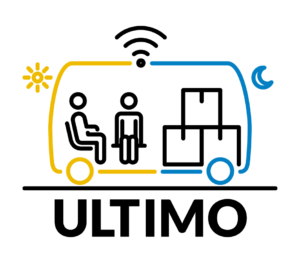
ULTIMO announces Padam Mobility as official partner
In early October 2022, the first phase of the project started, involving renowned partners from the fields of transport, vehicle manufacturing, science and research, politics and technology. They all share a holistic goal of developing autonomous public transport services that can be integrated into the existing infrastructure to move people in a resource-efficient, inclusive and cost-effective way.
In November, the official project launch was celebrated in Brussels. Padam Mobility’s Project Lead Javier Guimerá presented Padam Mobilty’s on-demand AV solutions to the other partners and gave insights into the successes of the AV projects supported by Padam Mobility so far.
Holibri in the fast lane: After less than a year, on-demand service in Höxter, Germany already welcomes 50,000 passenger
In December 2021, the on-demand service “Holibri” was introduced in Höxter, a city with a population of around 30,000 – easily accessible with almost 1,300 virtual stops throughout the city. And the service is catching on: An average of 4,500 passengers per month use the fleet, which is powered exclusively by green electricity – and consists of only 4 vehicles in total.
More information (Text in German)
DECEMBER
IDFM renews trust in Padam Mobility for another four years
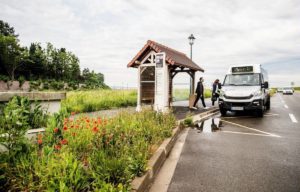
The Padam Mobility – Setec consortium has once again been selected by Île-de-France Mobilités to continue the deployment of TàD Île-de-France Mobilités until 2026.
The Transport on Demand service operated by Île-de-France Mobilités is one of the largest DRT networks in the world. In a couple of days, it is expected to reach one million passengers. The system provides a response to the challenges of mobility in areas with low population density and poor connections to the regular infrastructure. For the renewal, the agency RƎLIEF was appointed to boost the popularity of the offer among users.
2023: Off to a great start!
On Thursday 12 January, Padam Mobility is hosting its own event: MeetUp Mobility in Marseille. The focus of the event is on public-private dialogue in the context of shared mobility projects in rural areas.
The idea behind it? To exchange opinions and make initiatives known.

- Alternating between high and low population density in a multi-faceted area
- Geological and topographical constraints: Coastal areas, mountains…
- Seasonal mobility needs
- Ageing population
- Car traffic
If you want to stay up to date, subscribe to our newsletter or contact us directly.


